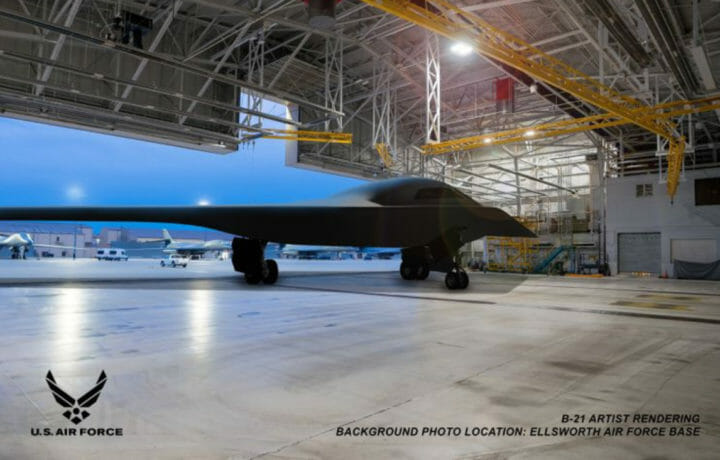Currently, the United States is one of three nations – along with Russia and China – that operates long-range strategic bombers. All three nations are also working on their respective next-generation aircraft that will eventually result in the retirement of aging platforms.
In the United States, the B-52 Stratofortress first entered service 60 years ago, while the B-1B Lancer joined the bomber fleet in the early 1980s. Even the B-2 Spirit has been in service for 25 years. More importantly, all three will be replaced by the recently unveiled Northrop Grumman B-21 Raider. By the late 2040s, when the last of the B-52s are scheduled to be retired after almost a century in service, the B-21 Raider could very well be the only U.S. Air Force bomber flying.
However, what happens if the platform is grounded?
That particular question might have seemed far more of a hypothetical until last week, when a B-2 Spirit took part in an emergency landing at Whiteman Air Force Base (AFB), MO, resulting in a fire that caused significant damage. Though not a total write off, it could be at least two years before the bomber is returned to service again.
Nuclear Triad
It is still significant as the Air Force has only twenty B-2 Spirits in its entire fleet, which has since been grounded. Several of those bombers had been recently deployed to Europe while others were sent to the Indo-Pacific as a deterrent to aggression from Russia and China respectively.
“Ultimately, accidents involving the B-2 are rare, with only a handful of incidents in the last two decades. The reaction from the Air Force in grounding the entire fleet of twenty B-2s may reflect the limited size of the fleet, the value of each individual platform, and the sensitivity of the platform to mishaps,” said Harry Boneham, an analyst for aerospace, defense, and security at international analytics firm Global Data.
With only 20 aircraft available, the loss of individual platforms is amplified. Currently, the Air Force has the B-52 to fall back on as part of the United States military’s nuclear triad.
“The Department of Defense, to include the Air Force, has a variety of capabilities at its disposal, particularly when it comes to our strategic bomber fleet,” Pentagon press secretary Brig. Gen. Pat Ryder told reporters, and dismissed any concerns that the U.S. would be vulnerable due to the grounding of the B-2s.
“On any given day at any given time, there is going to be aircraft, ships, forces on the ground available to confront any threat that we may have wherever it may pop up. So no vulnerabilities at this time,” Ryder added.
Moreover, the B-2 only comprises a small portion of the U.S. bomber fleet currently, and the B-1B Lancer and B-52 can to a certain extent pick up the slack.
“Although they do lack stealth capability, the temporary grounding of the B-2 fleet does not represent a substantial strategic vulnerability,” Boneham told ClearanceJobs.
What if the Raider Can’t Go Raiding?
The B-52 is a back-up, at least for now. Will there be an issue when B-2 Spirit is the only game in town?
“In future, with the B-21 intended to comprise the majority of the U.S. bombing fleet, a flaw which compelled the USAF to ground the fleet would be a more significant concern,” Boneham acknowledged. “The B-21 grants pilots the ability to penetrate enemy air defenses and strike targets anywhere. The B-52s which will fly alongside the B-21 do not have this capability, and so if the B-21 were to be grounded, this capability would be lost.”
However, one of the main advances made by the B-21 over the B-2 is its maintainability.
“It appears that the B-21 is overall a more robust platform which is easier to maintain and quicker to repair,” explained Boneham. “For example, whilst the B-2 had to be stored in environmentally controlled hangers to protect its low observability coating material, the B-21 does not have this requirement. It could then be argued that it is less likely that the B-21 will encounter flaws which will drive the grounding of the entire fleet.”




